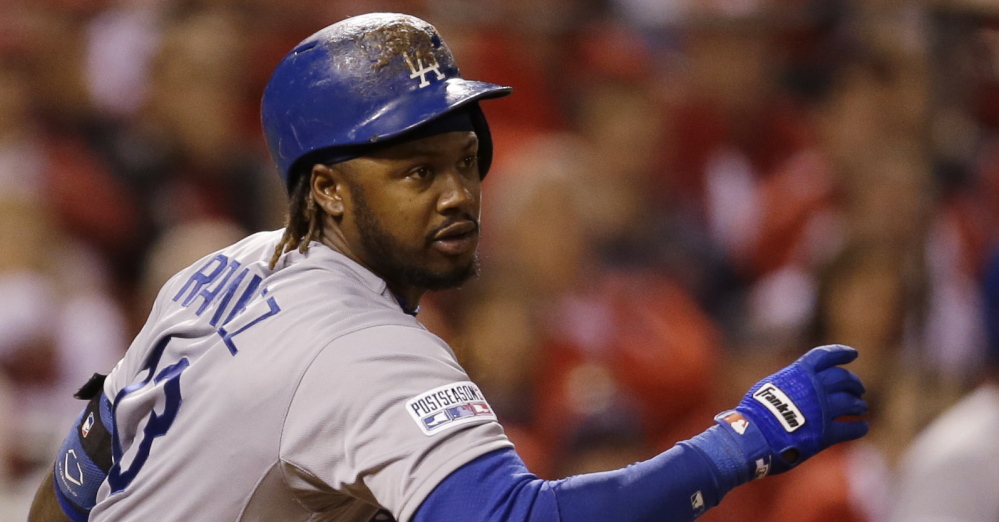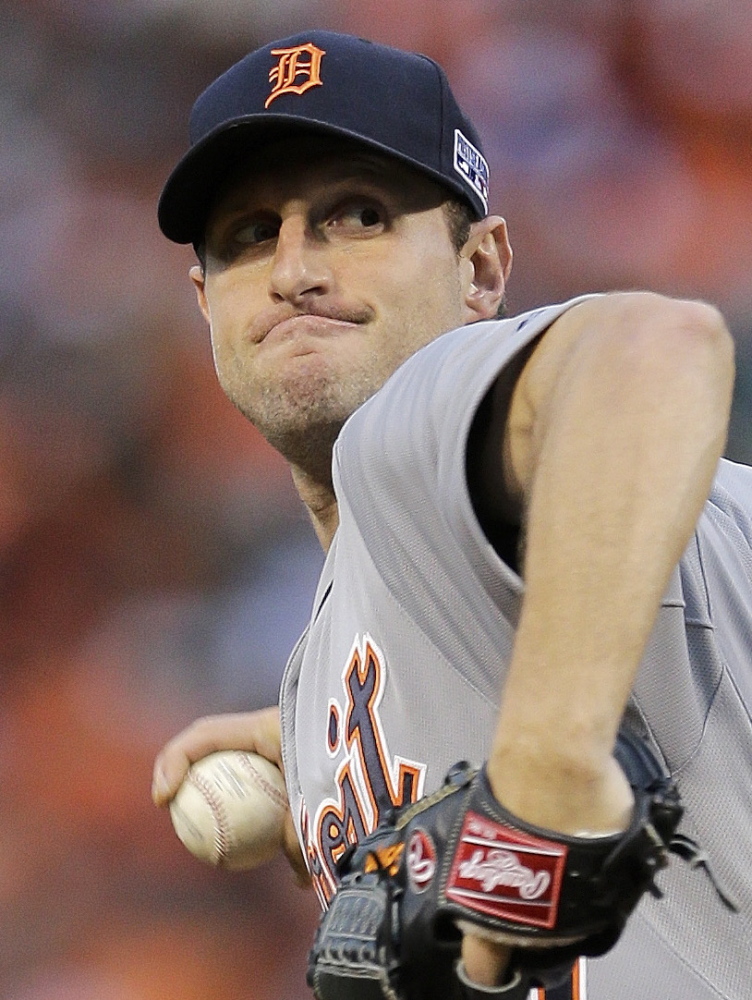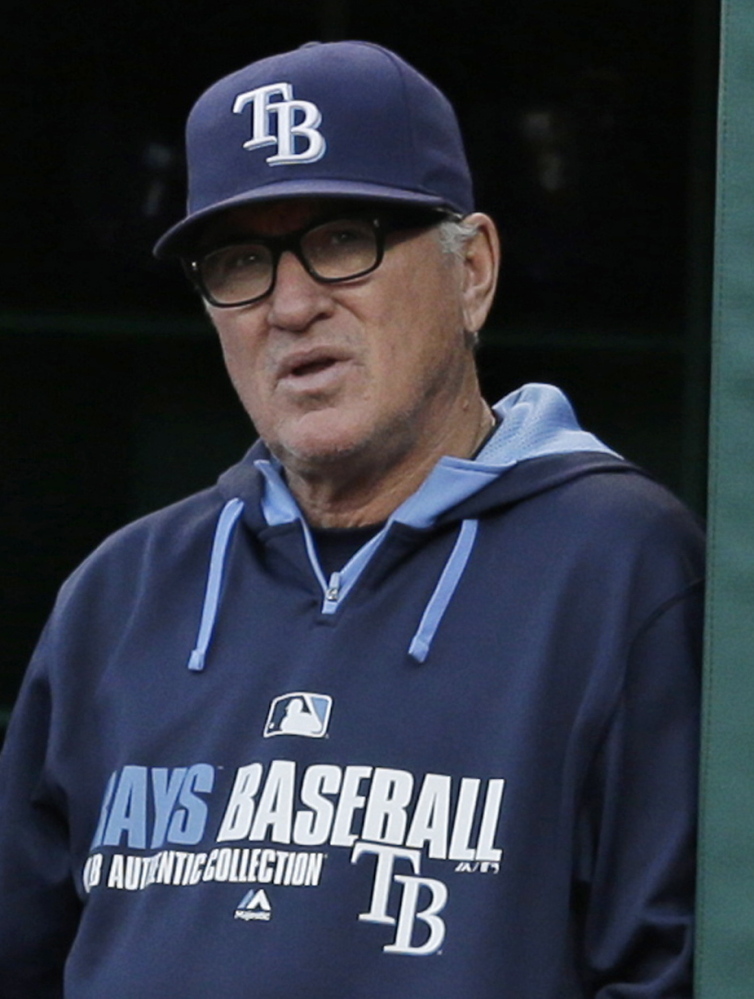The word “offseason” never seems to fit for baseball, a sport that remains very much “on” in the public consciousness even when the actual games are long over. And now that we’re headed into six weeks of spring training, it’s still quite a while before anyone throws a pitch that counts.
But this winter featured a number of moves that shifted the MLB landscape, including a serious makeover by the Padres, Joe Maddon’s defection to the ascending Cubs, another Billy Beane-inspired roster shuffle by the Bay and more rotisserie baseball at Chavez Ravine, this time by new Dodgers General Manager Andrew Friedman.
For now, we can only calculate their impact on paper, with projected lineups and pitching rotations. There’s no way to accurately label anything a success or failure until we reach September. But there are plenty of situations to watch in Florida and Arizona during the next month and a half, so here’s a handy guide, both to refresh your memory of what went down this winter and what to look for in the coming weeks.
HANLEY VS. THE MONSTER
In a surprising twist, the best free-agent shortstop this offseason, Hanley Ramirez, signed with the Red Sox – to play left field.
Granted, Ramirez’s defense at his former position has deteriorated and Boston chose to pay him $88 million for four years for his bat. Usually, athletic infielders can adapt to playing left, and Fenway obviously has the smallest patch of grass to cover there in the league. But the 37-foot-high wall can make life frustrating, so that bears watching.
At least JetBlue Park, the team’s spring training facility, features a replica of the Green Monster to help Ramirez adjust.
PRELLER MANIA
It’s debatable who the biggest on-field talent is for the Padres as they head into spring training. But the true rock star of that franchise is first-year general manager A.J. Preller, who didn’t waste any time putting his imprint on a team that hasn’t been in the playoffs since 2006. Preller got the Dodgers to pick up nearly $20 million of Matt Kemp’s salary as part of his outfield overhaul, along with trading for Wil Myers and Justin Upton.
Just this past week, he added the last of this winter’s marquee starters by giving a four-year, $75-million deal to James Shields. Will it all work? Tough to tell. But at least Preller has made the Padres relevant again – in a hurry.
NORTH SIDE SHAKEUP
The Cubs didn’t wait for the season to end to begin their aggressive winter push. In the middle of the World Series, Joe Maddon opted out of his Rays contract – a loophole made possible when Friedman bolted to the Dodgers – and wound up with a Wrigley office only a matter of days later.
The charismatic Maddon had a personality that drove the small-market Rays, but now he’s backed by the deep pockets of the Cubs, who spent $155 million to lure Jon Lester away from returning to the Red Sox.
Other than Maddon, the most intriguing story line is what happens with the Cubs’ glut of young infielders, which includes top prospects Addison Russell, Javier Baez and Kris Bryant. Does Starlin Castro stick or will he eventually be dangled as trade bait? Stay tuned.
TAMING THE TIGERS
At last July’s trade deadline, the Tigers and A’s made supposed World Series bids by trading for elite pitchers – David Price and Lester, respectively.
But Detroit’s unbeatable rotation was swept in the first round by the Orioles and Oakland lost its wild-card game to the Royals.
Now the Tigers appear to be at a crossroads, with Price heading into his walk year and Scherzer signing with the Nationals.
Detroit even traded Rick Porcello to the Red Sox for Yoenis Cespedes, who joins a lineup that probably won’t have Miguel Cabrera (ankle surgery) for Opening Day and has Victor Martinez rehabbing from a recent knee surgery.
COUNTDOWN TO MONCADA
Cuban shortstop Yoan Moncada is officially The Next Big Thing, and with the bidding set to begin in a matter of days, this should provide a nice little boost for baseball heading into spring training.
Moncada, who turns 20 in May, has been universally lauded as a can’t-miss prospect, a switch-hitting shortstop with power – in other words, the kind of player that doesn’t come around all that often.
Moncada’s timing also couldn’t be better, as the Yankees and Red Sox have only the remainder of this signing period to blow past the spending limits before they are reined in after July. (Teams are allotted a certain amount for international signings and the Yankees and Red Sox have overspent their limits during this period, which ends in July, so they can’t sign anyone next year as a penalty. But because they’ve already gone past the limits, they can keep doing it until July, which gives them leeway to do whatever it takes for Moncada.)
Some reports expect Moncada to get a signing bonus of more than $30 million, and he’s just the beginning of a Cuban wave that will grow with the U.S. in the process of lifting its trade restrictions on the island nation.
NOT SO SUNNY IN PHILADELPHIA
With the broken Phillies showing more cracks than the Liberty Bell, there should be a yard sale in Clearwater as GM Ruben Amaro continues his rebuilding efforts. They traded franchise cornerstone Jimmy Rollins to the Dodgers in December.
The next anticipated moves are shipping out closer Jonathan Papelbon – along with the remaining $13-million salary and potential $13-million vesting option – and getting some young talent back for Cole Hamels, who should have an abundance of suitors.
The Red Sox need an ace to front their retooled rotation and have the prospects to pull off such a trade. Hamels is owed a guaranteed $96 million through 2018.
MAX EFFECT IN D.C.
Did the Nationals give Max Scherzer a seven-year, $210 million contract in order to create a super-sized rotation for 2015? Or was it for the flexibility to trade one of their starters for another roster need?
Jordan Zimmermann and Doug Fister are headed into their walk years, making it nearly impossible for even the money-is-no-object Nationals to retain both beyond this season.
But given their playoff flops, the expectation is that Washington will keep this group intact to go with two more ace-caliber pitchers in Stephen Strasburg and Gio Gonzalez. That should be enough to win the NL East, but in the unlikely event things go awry, it’s also worth monitoring to see if the Nats choose to move shortstop Ian Desmond, who will be a free agent after this season.
THE $265 MILLION QUESTION
The Dodgers seem to enjoy spending money – even if it’s paying off a division rival, as they did in the Kemp deal with the Padres.
But in swiping Friedman from the Rays in October, they also wanted a change in philosophy. Not to simply buy players but to have a plan in place, and Friedman quickly executed that plan during a wild four days at the winter meetings.
He traded Dee Gordon to the Marlins and got Howie Kendrick from the Angels to replace him at second base. He let Ramirez walk and got Rollins. Then he blew away the Yankees by outmuscling them for Brandon McCarthy, who got a four-year, $48-million deal.
It’s a different up-the-middle look for the defending NL West champs, but it should wind up with a repeat.
NEW YEAR, NEW RULES?
Bud Selig has retired, but his concerns about speeding up the game remain, and new commissioner Rob Manfred is moving ahead with initiatives that are likely to be introduced in spring training before getting the green light for Opening Day.
MLB officials were alarmed last season when games averaged more than three hours, so look for the implementation of new guidelines, such as hitters keeping one foot in the batter’s box and other time limits such as between-inning breaks and for pitching changes.
MLB does not seem ready to push ahead on a 20-second pitch clock, which was tested in the Arizona Fall League last season, but that could come at a later date.
THE KANG EXPERIMENT
A number of teams were looking for shortstops this offseason – the Mets among them – but the Pirates had to lay out only a $5 million posting fee for Jung-Ho Kang, a power-hitting star in Korea who put up ridiculous offensive numbers.
Kang also signed a relatively modest four-year, $11 million deal.
That will look like a bargain if he is anywhere close to the player he was in the KBO, where he hit 40 homers last season with a slash line of .356/.459/.739.
Some say he projects more as a third baseman in the majors, but Kang insists otherwise, and he’ll get his chance to prove the doubters wrong later this month.
Send questions/comments to the editors.





Success. Please wait for the page to reload. If the page does not reload within 5 seconds, please refresh the page.
Enter your email and password to access comments.
Hi, to comment on stories you must . This profile is in addition to your subscription and website login.
Already have a commenting profile? .
Invalid username/password.
Please check your email to confirm and complete your registration.
Only subscribers are eligible to post comments. Please subscribe or login first for digital access. Here’s why.
Use the form below to reset your password. When you've submitted your account email, we will send an email with a reset code.